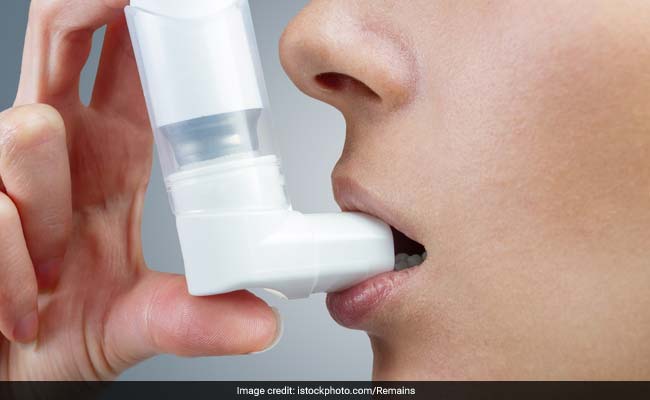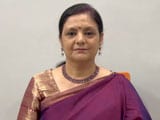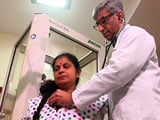Asthma in children dis
Asthma in children guide
Asthma in children
What is it?
When a child suffers from repeated episodes of cough and wheezing (a high pitched sound heard each time the child exhales out air) he is said to be suffering from asthma. Generally, there must be more than three episodes before a label of asthma is given. Many parents, and even some doctors, think that these children are suffering from allergic bronchitis, wheezy bronchitis, bronchitis, nasobronchial allergy, allergic cough, spasmodic bronchitis, chest congestion, hyper-reactive airway disease or change of season problems. No matter what name is given to the above-described disorder, experts believe that the correct medical term is ‘asthma’ The importance of using the correct term, asthma, is that only then would the doctor and the patient start prescribing or taking the appropriate treatment. Use of appropriate therapy makes the child’s life more comfortable and prevents him from developing the long-term, probably permanent, damaging effects of the disease. It must be emphasized that not all patients with asthma wheeze. Some only have a cough; others have breathing difficulty during play or exercise only. Take the word of the child’s paediatrician seriously. Normally, no laboratory tests are required to confirm the diagnosis. The clinical history of the illness as told by the parents, and a physical examination by the paediatrician is enough. Sometimes tests like chest X-ray, peak flow rate and lung function tests may be requested.
What is the treatment?
Two types of medicines are used for treatment of asthma:
1. those that relieve symptoms
2. those that prevent subsequent attacks.
Relievers reverse the symptoms of cough, breathing difficulty and wheeze quickly. Such medicines include: salbutamol, terbutaline, fometerol, theophyllines and ipratropium. Some of these medicines can be given by inhalation only (as inhalers or by nebulizers), while others are given by mouth (as tablets or syrups) or as injections.
Preventive medicines are those that reduce the chances of recurrent episodes, thereby improving the quality of life of the child. Steroids, cromolyn, salmeterol, leucotriene inhibitors and long-acting theophyllines belong to this group. The best way to administer these medicines is by the inhalation route.Inhalers are devices by which a medicine is converted into an aerosol or mist. The patient inhales this aerosol.
There are two types of inhalers – metered dose inhalers (MDIs) and dry powder inhalers (DPIs).
When the MDI is pressed or actuated, a measured or metered dose of the medicine comes out as a mist. With DPIs, the patient inhales a powder contained in a capsule. The DPI (e.g., Rotahaler, Accuhaler) is particularly useful for small children.Inhalers deposit the medicine directly into the air passages and only very small (micro) quantities of the medicine actually go into the body. This way the side effects are minimised and the effect is almost instantaneous as the medicine goes to the site of the disease directly. Owing to minimal side effects, preventive medicines (even steroids) can be safely given for prolonged periods of time.To further minimize the side–effects of the MDIs and to enhance the effect of each dose ‘spacers’ are recommended.
The nebulizer is another device to generate an aerosol. It is especially useful for small children and infants. Since aerosols are the better methods of delivery of medicine, inhalers and nebulizers have become more popular than tablets and syrups in the developed countries. In our country also, people are overcoming their inhibitions and beliefs and are using inhalers as the first line of treatment. No more does an educated Indian parent consider the inhaler as a ‘last resort’.Inhalers are not addicting. However, asthma is a chronic disease and requires prolonged treatment.Most children improve when they are put on inhalers. Although the paediatricians and paediatric lung specialists prescribe prolonged treatment, parents have a tendency to stop the medicines within days of improvement.
Since, asthma is a chronic disease symptoms can come back, this explains the so – called ‘failures’ of inhalation therapy.There is a 50% chance that an asthmatic child will be free from asthma in later childhood. However, those who have severe disease, have other allergies or have other members of the family (or extended family) suffering from asthma are likely to require therapy for very long periods. There is proof in medical science that all such patients improve on prolonged treatment and their disease remains under control.The commonest cause of persistent cough in an otherwise healthy child is bronchial asthma. It is estimated that, in Delhi, one out of every five children has at least one episode of wheezing.
Do Read: Guidelines to prevent asthma attacks
Asthma in children News More News
- Can Omega-3 Fatty Acids Help Prevent Asthma? Study Reveals The Link
- Toxins Found In E-cigarettes Can Lead To Asthma: Warns Study
- Car Pollution Caused Asthma In 350,000 Indian Kids
- Grass Pollen Can Help Predict Asthma, Hay Fever
- Father's Obesity In Puberty Increases Asthma-Risk For Offspring
- Priyanka Chopra Advocates Timely Intervention For Asthma
- Here's How Fruits And Vegetables Can Help In Reducing Asthma Symptoms
- Eczema Drug May Help Treat Severe Asthma Symptoms
- World Asthma Day: Here's Why Men Are More Prone To Asthma Than Women
Asthma in children Health Photos More Photos
Asthma in children Videos More Videos
................... Advertisement ...................
................... Advertisement ...................
................... Advertisement ...................
................... Advertisement ...................

































